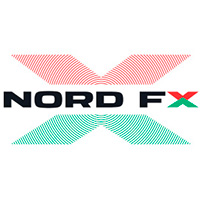The Contract for Difference of shares and stocks (CFD) provides a sort of leeway for traders and investors to trade and profit basically on the price movement while not owning the underlining shares and stocks. It’s a kind of financial arrangement under which you can trade without exchanging ownership of the trading assets. The transaction between a buyer and a seller on the CFD is based not actually on the stocks but the movements of the share price.
In effect, an upward movement of the price of share during the course of a CFD trading compels the seller to pay the buyer the difference in price, and vice versa when the price of the share goes down. While there is a momentary change in the value of the share during the trade, the share itself does not change its ownership.
Features of CFDs
There are certain features that are unique to CFD trading that indicate its advantages and disadvantages. One crucial feature of CFD trading is that the potential gains run parallel with the potential losses. So the greater the chances for one, the greater the chances for the other.
To put that into perspective, let’s say the asking price of a stock is $20.25 and a trader goes for 100 shares. The cost automatically is $2025 plus fees and commission. With a traditional broker account of a 50% margin, the trade in consideration requires a minimum of $1012.50. But a CFD broker requires just $101.25 being the 5% margin.
A CFD transaction will indicate a loss that corresponds to the size of the spread as at the transaction time. That means for a spread of 6 cents, the stock must gain the 6 cents to reach the breakeven price. Yes, you may gain the 6 cents if you traditionally owned the stock. However, your capital outlay must be higher in addition to the fact that you have paid a commission.
The Leverage
In CFD trading, traders are provided with highly leveraged products. This higher leverage is an advantage over traditional trading. It enables the traders to have access to more underlying asset based on the leverage provided by brokers. And the leverage is standard and regulated. It could be as low as a 2% margin which is a leverage margin ratio 50:1. Of course, it can also be as high as 20%.
The margin refers to the percentage of the value that the trader is expected to deposit. That is why it requires less capital outlay of a CFD trader while the potential returns are greater. However, when the leverage is increased, the losses can be magnified.
This feature of leverage of margin shifts the financial burden of capital outlay off a CFD trader. Courtesy the leverage, the trader essentially borrows from the broker to have access to more shares than he could afford with his starting capital. The loan he obtains is referred to as the margin.
Execution Fees
Most CFD brokers do not charge commissions or fees for trading, unlike the traditional brokers. What CFD traders are required to pay in most cases is the spread which is the differential of the bid and the ask prices. In practice, while the trader buys at the ask price, he sells at the bid price. The difference between these two prices, the spread, is the broker’s gain. The size or volume of this spread depends on how the forces of demand and supply play on the volatility of the underlying asset being traded. There can be fixed spreads, at any rate.
Free of Day Trading
In CFD trading, there are no requirements and limitations regarding the amounts of capital to day trade or the amount of day trade on an account. Day trading is at the caprice of account holders.
Required Deposit
An account in the CFD market can be opened with a considerably small amount. While the minimum deposits of between $2,000 and $5,000 are the commonest, it is still possible to open a CFD account with as little as $1,000.
Industry Regulation
As can be seen from the features above, the CFD market is not strictly regulated, unlike the traditional stock market. This can be a very great disadvantage. Traders will have to depend on the reputation, experience, and financial position of a broker to determine the credibility. This weak regulation increases the risk of trading in the CFD market where there are liquidity risks and margins to be maintained.
You may mitigate such risks by counting on LegacyFX. CFD traders can get authentic information regarding the goings-on in the CFD market. From the daily and steady supply of the financial news, stock quotes, and trading forecast, you will be able to determine not only the credible brokers but also dependable indicators.
 Trump has declared that the United States could become the global capital of the crypto industry. To achieve this, he proposes reducing regulatory pressures.
Trump has declared that the United States could become the global capital of the crypto industry. To achieve this, he proposes reducing regulatory pressures. Forex trading is a captivating endeavor, promising both active and passive income streams. Yet, mastering forex is a continuous journey that transcends expertise levels, be it a novice or a seasoned trader...
Forex trading is a captivating endeavor, promising both active and passive income streams. Yet, mastering forex is a continuous journey that transcends expertise levels, be it a novice or a seasoned trader... In a resounding victory, NordFX, a prominent brokerage firm, has been crowned the "Best News & Analysis Provider" of 2023...
In a resounding victory, NordFX, a prominent brokerage firm, has been crowned the "Best News & Analysis Provider" of 2023... Errante, the premier online broker, is dedicated to delivering top-tier services and forging long-lasting, trust-based relationships with our clients. Our mission is to enhance your online trading journey...
Errante, the premier online broker, is dedicated to delivering top-tier services and forging long-lasting, trust-based relationships with our clients. Our mission is to enhance your online trading journey... Gold, a precious metal revered for its value for centuries, has found its place in the world of trading. Trading gold has become a popular way to invest in the commodity market...
Gold, a precious metal revered for its value for centuries, has found its place in the world of trading. Trading gold has become a popular way to invest in the commodity market...